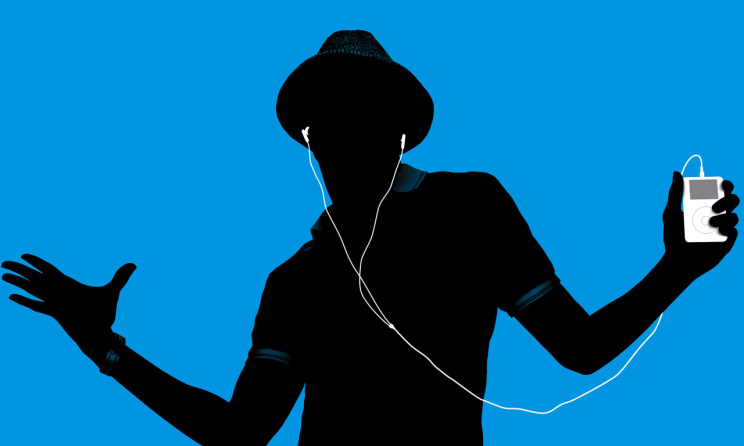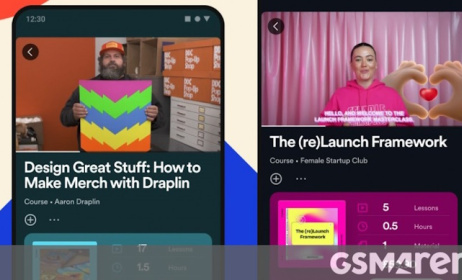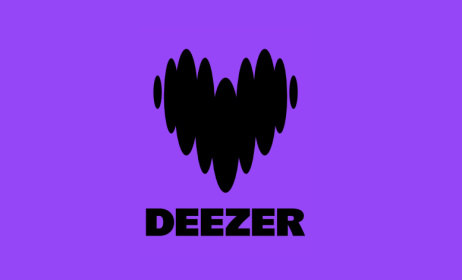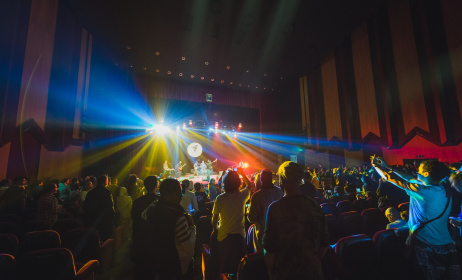The music business re-imagined
While the recorded music industry currently rests on a poorly functioning and tenuously constructed business model, technological advancements and an incredibly high level of consumer engagement present an opportunity for positive change.
 Music distribution channels. Photo: www.youtube.com
Music distribution channels. Photo: www.youtube.com Listening to music in the digital age. Photo: www.hyperbot.com
Listening to music in the digital age. Photo: www.hyperbot.com
When I work with traditional music companies: labels, publishers, PROs, artists, I am usually labeled a “tech” person. When I work with technology companies: hardware, software, platforms, I’m typically seen as a “music” person. Since I’ve worked inside different verticals in tech and music since 2000, I’ve been able to see through different lenses, and become somewhat bilingual. Even though music has been the canary in the digital coalmine, I believe we are still in the earliest stages of developing a digital music economy, and I’m optimistic.
Music consumption is at an all-time high, great music is being produced by artists all over the world, and connectivity has reached 40% of the global population. By far the biggest opportunity now and in the future is to enable innovative, licensed music products to reach consumers through an ever-evolving mix of connected speakers, cell phones, wearable’s, devices, platforms, and applications, and to efficiently collect and distribute revenue back to creators from all of this usage.
However, the music industry as a whole is not well poised to maximize many emerging and future opportunities. Why not? Music has shifted from high margin/low complexity distribution of shiny plastic discs to low margin/high complexity distribution of digital streams. You don’t need an MBA to know that this is not the right quadrant to operate in. The economics and value chain of rights holders and service providers that are needed to bring a music catalog to life is now a hodge-podge of technical platforms and data sets created variously since the 1980’s, none of which were designed for today’s usage and needs.
They all made sense at some point in time, but in a world of billion line streaming usage reports and five decimal micropayments, the inefficiencies are immense. Coupled with a lack of standards, this has resulted in complete and utter chaos in economics, licensing, catalog provisioning and reporting, and baseline song identification. We now have deep problems in the ecosystem, business “norms” that have reached diminishing returns, and a continuing gap between the music and tech industries. But with the high level of consumer engagement, we have a tremendous opportunity to tackle some tough problems and build for the future.
Fragmentation and silos of music data
Raising the table stakes of data associated with rights, artists and catalog to ensure that the core building blocks fit together better is paramount. I’ve personally observed multiple party proprietary IDs that don’t match up, ongoing disambiguation of problematic, essential data such as artist name, dispersion of error prone data, semantic matching, and incompatible business models, including service provider fees that can exceed music royalties due. All of this has contributed to a shaky foundation on top of which music services precariously sit. And on the other side, artists and rights holders often lack visibility into how their assets are being used, what is or is not working, and what monies are owed to whom or held by whom. Core asset identifiers, knowing what to license from whom, and clarity on money flow should be our new table stakes. We need to up the game and recognize that clean data, like a post office box or an IP address, will enable accurate tracking and delivery of royalties, and be better for the industry as a whole.
Business “norms”
Currently there are very limited consumer offers that are tied to licensing and business model “norms”, which are de facto “licensable” but not necessarily a win for anyone. With multiple full catalog $9.99 services that compete for the same consumer with the same product at the same price point, we are effectively pitting all services against each other in a fight to the death. How does this grow a diverse music customer base? Music is inherently tribal and made up of niches and individual preferences, but we have not yet met those consumers’ needs digitally. Reliance on one financial model and user proposition also exacerbates the impact of any discovered flaws in the model. Hence, unsustainability abounds and the graveyard of failures is vast. It’s time to challenge the “norms” and together explore ways to segment the global music consumer base with different offers, experiences and prices, which will help grow the pie, increase annual spending, and optimize both catalog usage and consumer reach.
Closing the gap between music and tech
To serve legally licensed streaming music today, it requires 18-36 months of byzantine legal negotiations, complex layers of service providers, and integration with opaque systems that were built in previous economic and technological eras. This multi-year clunky process is illogical to tech companies whose devices 3and platforms are conduits to consumers, and is nearly impossible to model as a product. And if you can’t model a product in a tech company and get buy-in up the chain, the idea is likely scrapped.
This laborious process also makes little sense to even the core stakeholders in the music industry (I’ve asked, and it doesn’t seem to be working for hardly anyone.) We’ve not yet figured this collaboration out. But underneath, I see two industries with complementary skills: music companies develop artists and technology companies develop applications. Combine the two with fair remuneration to creators, deliver to consumers and you have a big win. I firmly believe that through better alignment of business goals, simplification, and modernized use of common technological tools, we can create a vibrant future.
Streaming has come of age and we are on the cusp of a new era. We’ve barely begun! We haven’t yet found the optimal way for tech and music industries to work together, but when we get it right, I envision greater monetization of music through a suite of diverse models and music products that go far beyond what we know today (which I affectionately call “Databases That Play Music”), into AR, VR, fitness, mental health, wearables, specialized catalog offers, and the Next Big Thing. But in order to get there, we need to reimagine what this business looks like in the digital age, and I’m in.
Originally published on 2 February 2016 in Music Industry Today.





























Commentaires
s'identifier or register to post comments